Throughout the winter, you've been dreaming about the road trips you want to take once the "winter old man" leaves the scene, so as the temperature rises, it's time to put your plan into practice. Before you get on the road, you need to make sure your car is ready to drive. To get your car, truck, or SUV ready in the spring, be sure to check the winter Summary - end of season maintenance tips article. Once you've read that article, you can begin the techniques outlined below. At the end of the process, you will feel that your car is ready for the road.
1. Check Exhaust Systems
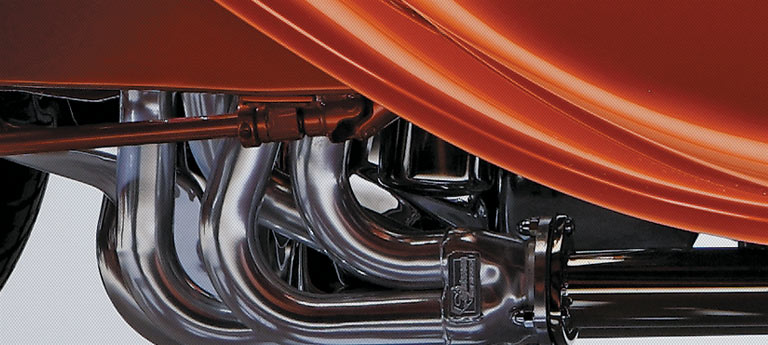
The exhaust is a vital part of your engine's emission system. It helps funnel away the gaseous products of the combustion process that drives your car, via a set of pipes that are connected to the top of the cylinder heads.
We would always recommend that you wear eye and hand protection whilst checking your exhaust. These checks are as follows:
Scrape away surface rust – brush off the rust from the exhaust system and inspect it for small holes.
Inspect joints and connections – here you are looking for streaks of soot and black marks around the connections and flanges.
Check the supports – older systems use straps to hold the exhaust manifold to the car, whilst newer systems use rubber loops.
Catalytic convertor problems – a sure sign that your CAT is breaking up is a small rattling sound coming from the unit.
Diesel particulate filter – this unit combines with the CAT to remove particles of soot from the exhaust system.
2. Check Your Timing System
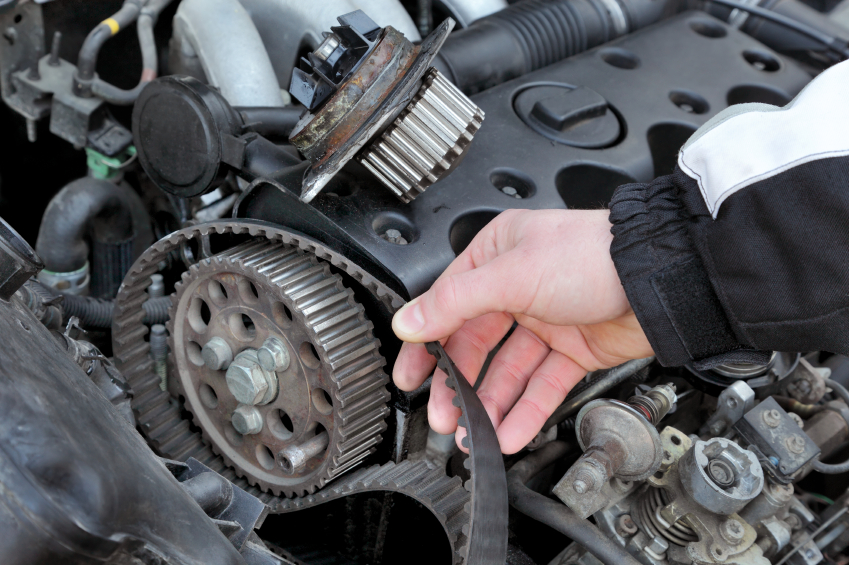
Temperatures below zero will harden and damage the rubber. In the spring, it is very important to inspect all hoses and belts for damage. Replacing any belt may also require replacing the tensioner and pulley to ensure the new belt doesn't slip.
Timing Chain
To allow the engine to be built larger and have more exotic layouts, the engine timing chain was developed. Now, the gears on the camshaft don't need to be directly connected to the gears on the crankshaft - instead, a chain similar to a heavy-duty 10-speed bicycle chain links all the different gears together and keeps them in sync. On modern cars, this chain is usually hidden behind a thick cover and lubricated with oil, so the engine runs smoothly and quietly. Best of all, modern timing chains are designed to be maintenance-free and will last the entire life of the engine!
Timing Belt
To make things quieter and cheaper to manufacture, a new timing system was developed that uses notched rubber belts instead of bulky metal timing chains. Replacing a timing belt is faster, cheaper, and easier than a timing chain or gear, and is lighter and quieter. But there's a caveat: rubber straps have been known to occasionally snap when worn. If the timing belt gets into your car, the engine could completely self-destruct! With the various parts of the engine out of sync, this could cause the piston to hit the open valve, almost certainly destroying the engine inside. That's why, if your vehicle's engine is staying on time with a timing belt, it's important to know when it needs to be replaced!
3. Check Wheels & Tires
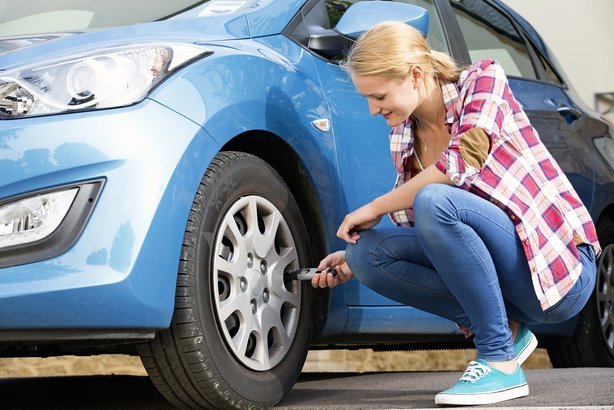
Potholes in wheel alignment can be rough, which can cause your tires to wear prematurely. If you notice your car leaning to one side, your wheels need to be aligned, your wheel spacers need to be diagnosed.
You may also need to replace the slick tires with new ones, depending on the amount of tread remaining. One way to check the tread of your tires yourself is to use pennies -- put the edge of the pennies into the tread of each tire. If the tread didn't cover any part of Abraham Lincoln's head, it might be time for a new tire.
Finally, low temperatures can cause tires to deflate. Follow these tips to check tire pressure using a tire pressure gauge. If they are low on air, fill the tires to the level recommended by the manufacturer.
4. Check Your Mirrors And Headlight Assembly
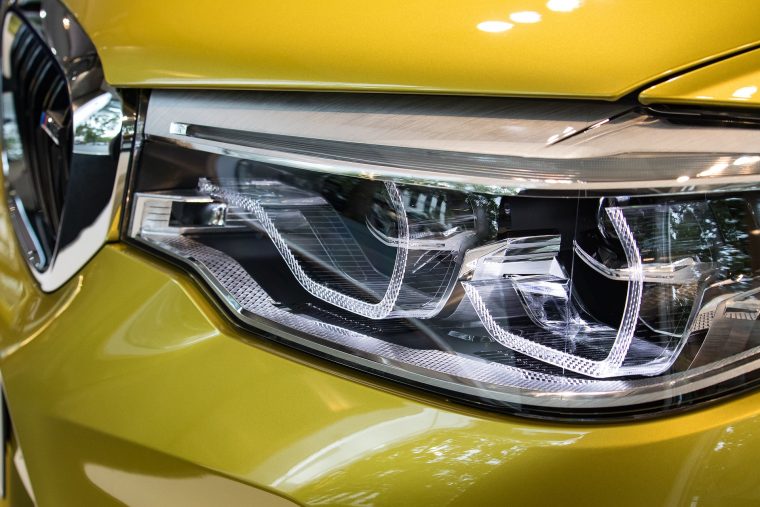
A thorough inspection of all exterior and interior lighting is important to keep the road safe. It is especially important to thoroughly clean your exterior lights. Defective or dirty lighting may fail to notify other motorists of your intention to stop or turn, which could lead to a collision.
For many drivers, the first time they realized they had turned off their lights was when the police pulled them over to tell them. Spring is the perfect time to check your mirrors for cracks, and you can have your family activate your headlights, taillights, backup lights, brake lights, stop lights, fog lights, and turn signals while doing a visual inspection.
5. Check Your Bumpers

Whether you find yourself in a road accident or you accidentally hit a pillar in the parking lot, your car’s bumpers are the first point of contact between your vehicle and anything beyond it. Despite that, your front and rear bumpers aren’t meant to repel whatever they hit.
What they primarily do is absorb some of that impact, reducing the damage to the rest of the car while also lowering the risk of injury to the people inside.
Simply put, your bumper is designed to take a fair bit of punishment. That might make it sound ‘disposable’, you should repair or replace your bumper when it gets damaged.
6. Check Your Cooling System

There's nothing worse than turning on the air conditioner in your car and only feeling hot air. Make sure your vehicle is ready for the first warm spring by testing your air conditioning system. Turn on the air conditioner and run the fan at all speeds.
Is the air as cold as you remember last summer? Does the fan blowhard at all speeds? If something goes wrong, make an appointment with your mechanic to check the cooling system.
7. Check Your Steering And Suspension Inspected

Potholes are a fact of life throughout the season as the freeze-thaw cycle seems to last through the winter. Hitting these obstacles can have an effect on the steering and suspension of the vehicle. If your steering is off to one side, it could be a sign that your vehicle is out of alignment, or if your car is riding unevenly, it could be a sign of a problem with the suspension.
If you suspect there may be a problem with your steering or suspension, have your vehicle inspected by a mechanic you trust. They'll be able to diagnose the problem and get you back on the road in no time.
8. Change Your Oil And Filters

Regular oil and filter changes are critical to keeping your engine healthy. Oil is important for absorbing impurities because it lubricates and cools your engine, but as oil ages, it becomes less effective. Failure to change the engine oil can result in higher fuel consumption, reduced engine performance, and may result in severe engine damage or shortened engine life.
9. Replace The Wiper Blades

Wiper blades can take a hit in winter. It's best to replace them in the spring when the onset of spring showers can cause reduced visibility.
10. Check Your Battery

Your battery takes a hit in cold temperatures. Spring is a good time to test it out and make sure it's installed and connected securely and without corrosion. Batteries older than five years may need to be replaced. Car owners always think the battery will die in the winter. Of course, they will, but they will also die in the summer.
11. Check the Brakes

Does your brake pedal feel squishy or do the brakes make strange noises when you press the pedal? Has the "brake" light come on recently? These can all be warning signs of a worsening problem. If your vehicle has "open rims" and you know a little bit about the car, look at the position between the wheel spokes and visually inspect the rotors and brake pads. The rotors should be smooth with no grooves, and you want the caliper pads to have at least 1/8 inch of thickness between the backplate and the rotors. If you are not sure, have a certified technician check it for you.
12. Spring Cleaning Inside And Out
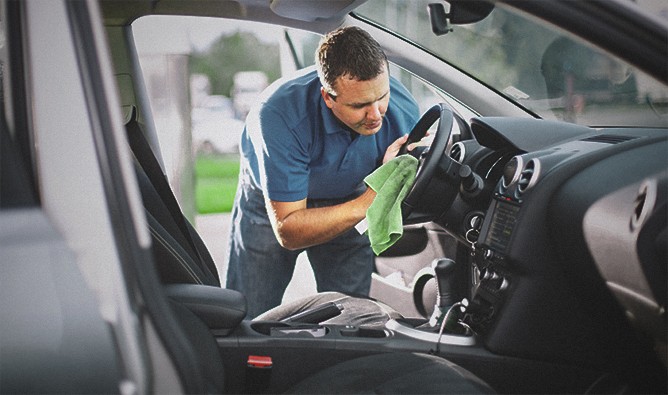
Spring cleaning isn't just for your home. After a long winter, your car can get a good clean - inside and out. Salt, sand, and dirt can coat not only the outside of your vehicle but your floor mats as well. Start a deep clean with a car wash trip, then spray the floor mats.
Thoroughly clean the interior. Remove floor mats from vehicle and vacuum, including all crevices. Also, vacuum and use upholstery cleaner on any stains. Complete your car's mini makeover with a coat of wax and watch the April showers roll off right away!








